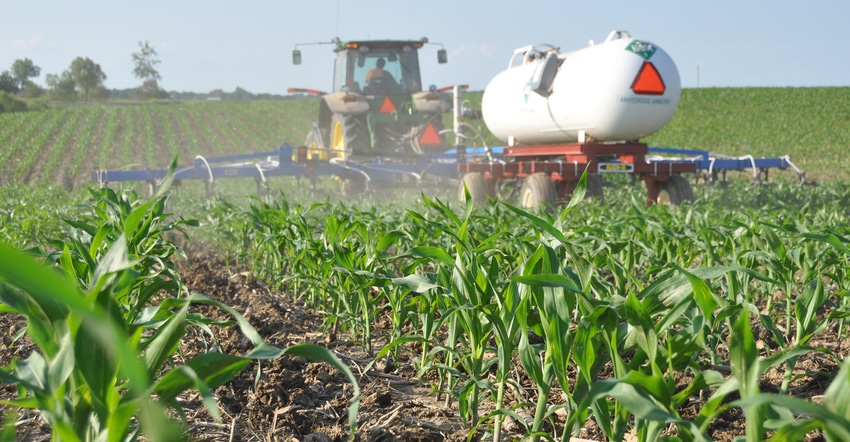
Agronomists from AgriGold, Wyffels Hybrids, and Dekalb and Asgrow say 2020 offers five takeaways for growers who want to achieve higher yields in 2021:
1. Plan for change. AgriGold agronomy manager Mike Kavanaugh has been all over the company’s Illinois territory looking at trial data. He says the hybrids that yielded the best one year have about an 11% chance of doing so again any other year. He says this points to the need to plan around weather, planting a percentage of more tolerant-to-stress hybrids to hedge against risk.
“Plant multiple hybrids, break maturity ranges up, and plant four to six different hybrids. That’s going to give the grower the best results,” Kavanaugh says.
Related: Prepare for higher resistant rootworm populations
2. Split N. With cool soil temperatures into May, soil-supplied nitrogen was relatively low in 2020. That made timing of applied N even more important.
Kavanaugh says AgriGold trials show a trend for corn yielding better when nitrogen is split into two or more trips during the growing season.
“That trend is continuing in 2020. If you’re sidedressing or Y-dropping your N, you’re consistently putting yourself in a position to win,” Kavanaugh says.
3. Plant early. Nearly every year, it pays to plant corn and soybeans earlier in the growing season instead of waiting for ideal soil temperatures — at least in the well-drained parts of the state. Kavanaugh says 2020 was no different.
An April stand will outyield a perfect late-May or early-June stand 90% to 95% of the time, he says. With seed treatments and a well-drained field, Kavanaugh notes early-planted crops will develop stronger root structures and achieve higher yields by the end of the growing season.
But in southeastern and southern regions of Illinois, early-planted crops were stunted by rain and cool conditions in 2020.
“In parts of southern Illinois, there isn’t a lot of tile drainage. Folks can get into trouble with cool soil conditions and too much water impacting emergence and stand counts,” Kavanaugh notes.
Farmers who plant soybeans instead of corn at the start of the growing season had a successful year in 2020, says Jim Donnelly, agronomist with Dekalb and Asgrow. In the northern Illinois territory he covers, those plots yielded as well or better than later-planted soybeans. He credits seed treatments.
“We had stand losses on corn this year. Maybe it’s better to wait for conditions to improve and plant soybeans first,” Donnelly says.
4. Use lower seed populations. Kavanaugh says 80,000 soybeans per acre planted early can achieve the same yields as 140,000 soybeans planted late. He recommends 100,000 to 130,000 seeds per acre, with the higher end of the range working best for narrow rows. While 80,000 is the minimum for a field, planting above that margin helps control weeds.
Corn, on the other hand, works best at “medium” populations, Kavanaugh says. He points to high populations of corn above 35,000 per acre as the most vulnerable to wind damage.
“Mother Nature is in charge. As much as we want to push the envelope on hybrids, the higher the population, the more vulnerable your crop is going to be to 100-mile-per-hour winds," he says.
5. Rotate continuous corn. Brent Tharp, Wyffels Hybrids technical product manager, says continuous corn acres underperformed in the late-season drought conditions that dominated in 2020. Yield potential fell from 250 bushels per acre for some continuous cornfields down to 200 to 230.
While the normal yield penalty for corn planted after corn is closer to 15 bushels an acre, dry conditions in August made the problem worse than usual. For one, in more stressed continuous-corn soil, Tharp says the crop cannibalized its stalks to fill grain. This impacted yields and standability.
Continuous corn acreage requires more nitrogen, too. With little soil-supplied N in the cooler, earlier stages of the growing season, nitrogen shortages appeared. The crop was impacted by less N availability later in the season with dry conditions.
“We tied up nitrogen later than normal; then when it turned dry, plants weren’t able to easily access it,” Tharp says.
On the flip side, Donnelly reports soybeans that were planted in acreage that used to be continuous corn consistently outyielded acreage in shorter corn-soybean rotations, sometimes approaching 90 bushels per acre.
“That just points to more reasons to rotate to soybeans in continuous corn scenarios,” Donnelly concludes.
About the Author(s)
You May Also Like




